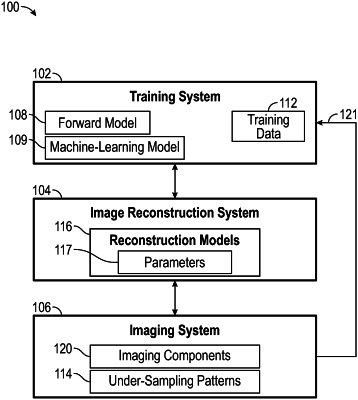| CPC G01R 33/561 (2013.01) [A61B 5/055 (2013.01); A61B 5/7203 (2013.01); A61B 5/7267 (2013.01); G01R 33/5608 (2013.01)] | 20 Claims |

|
1. A method of training a MRI image reconstruction system, comprising:
providing a set of input MRI images, wherein the input MRI images are all images of a same organ from different subjects and wherein each image from the set of input MRI images have a corresponding image quality and a corresponding k-space; and
processing the input MRI images using a neural network to collectively identify an under-sampling pattern and a reconstruction model, the under-sampling pattern and reconstruction model being specific to the same organ in the input MRI images;
producing new MRI images with the identified under-sampling pattern and reconstruction model, the new MRI images having an image quality that is substantially similar to the image quality of the input MRI images, from under-sampled MRI data to be captured using the identified under-sampling pattern, wherein the under-sampling pattern is configured to cause a k-space of the under-sampled MRI data to be under-sampled relative to the k-space of the input MRI images.
|